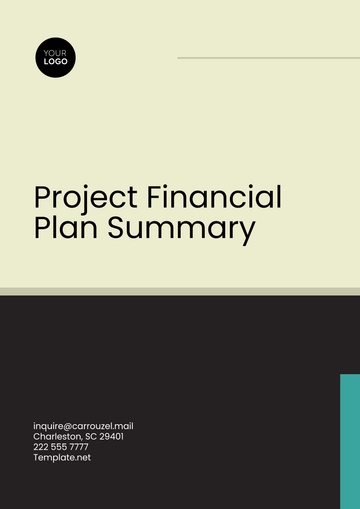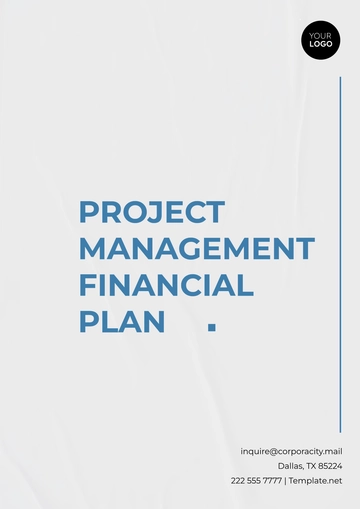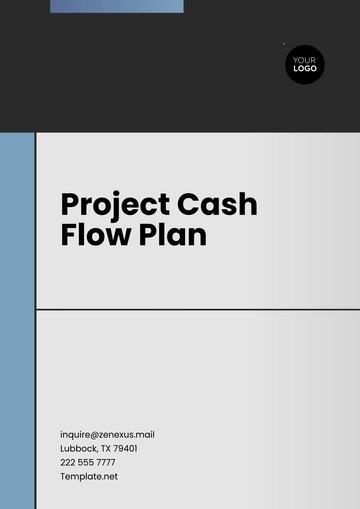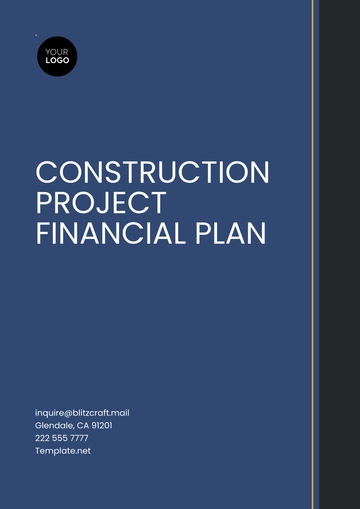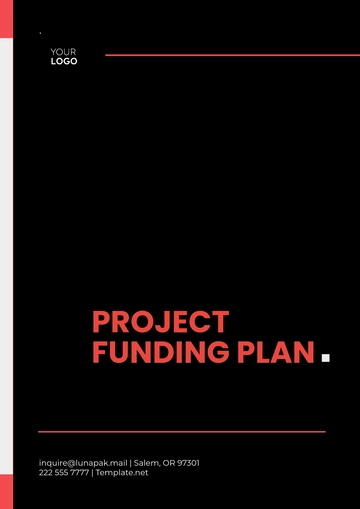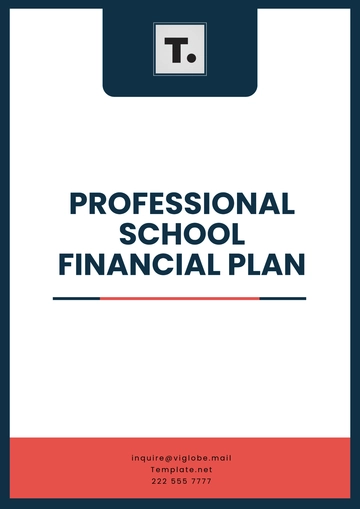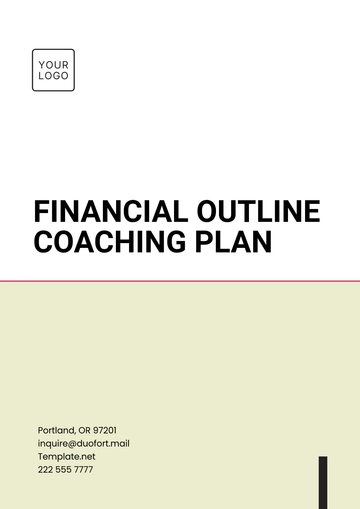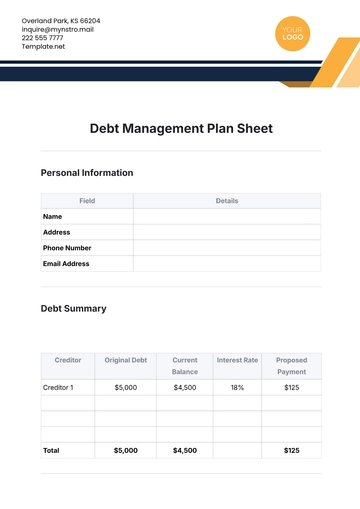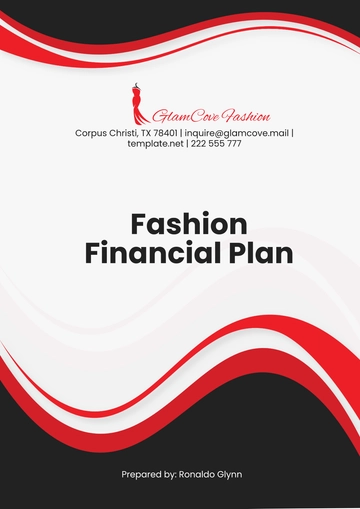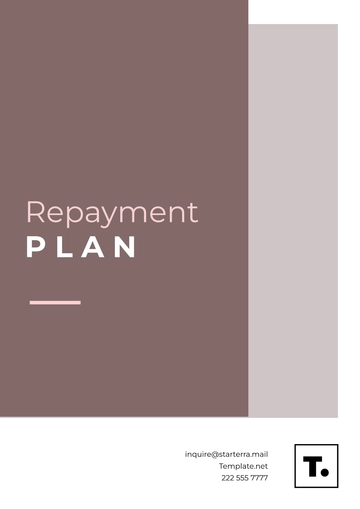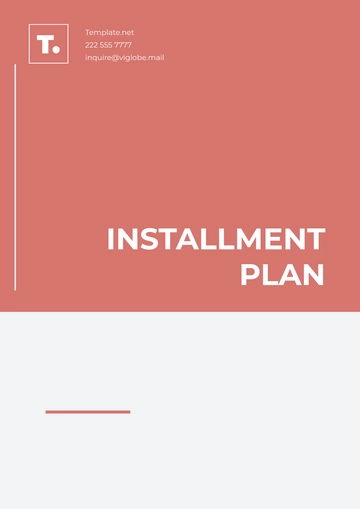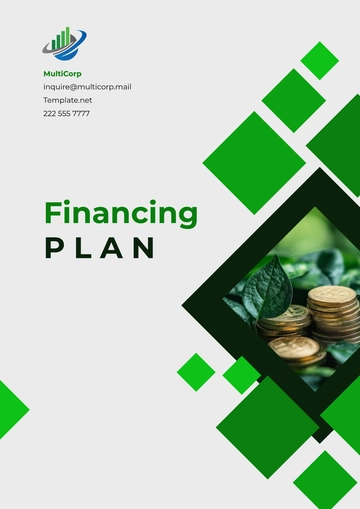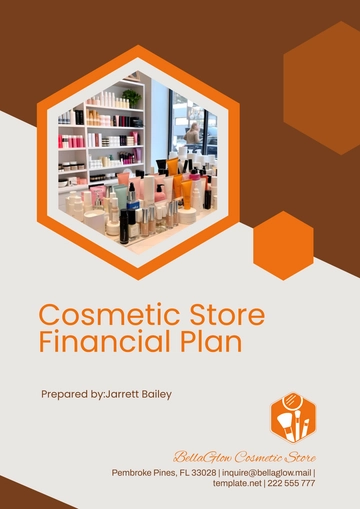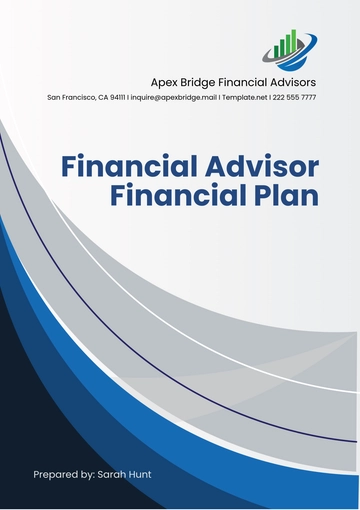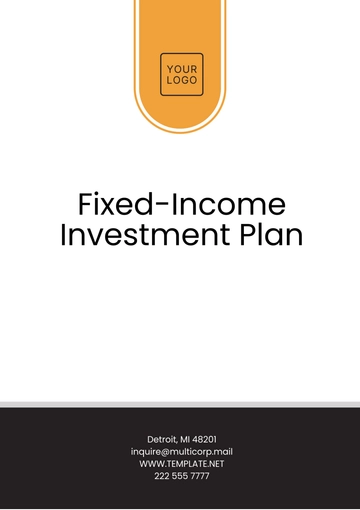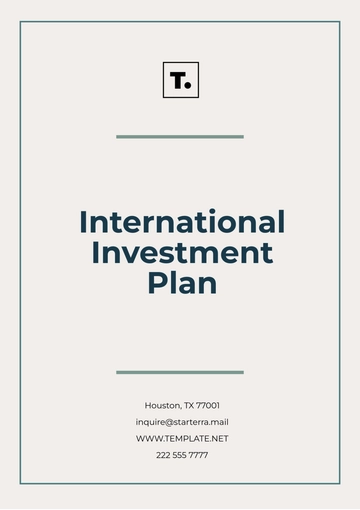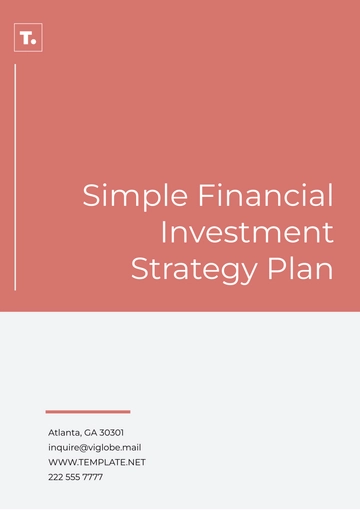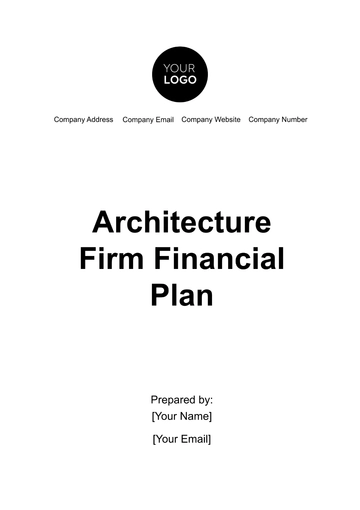Free Professional School Financial Plan
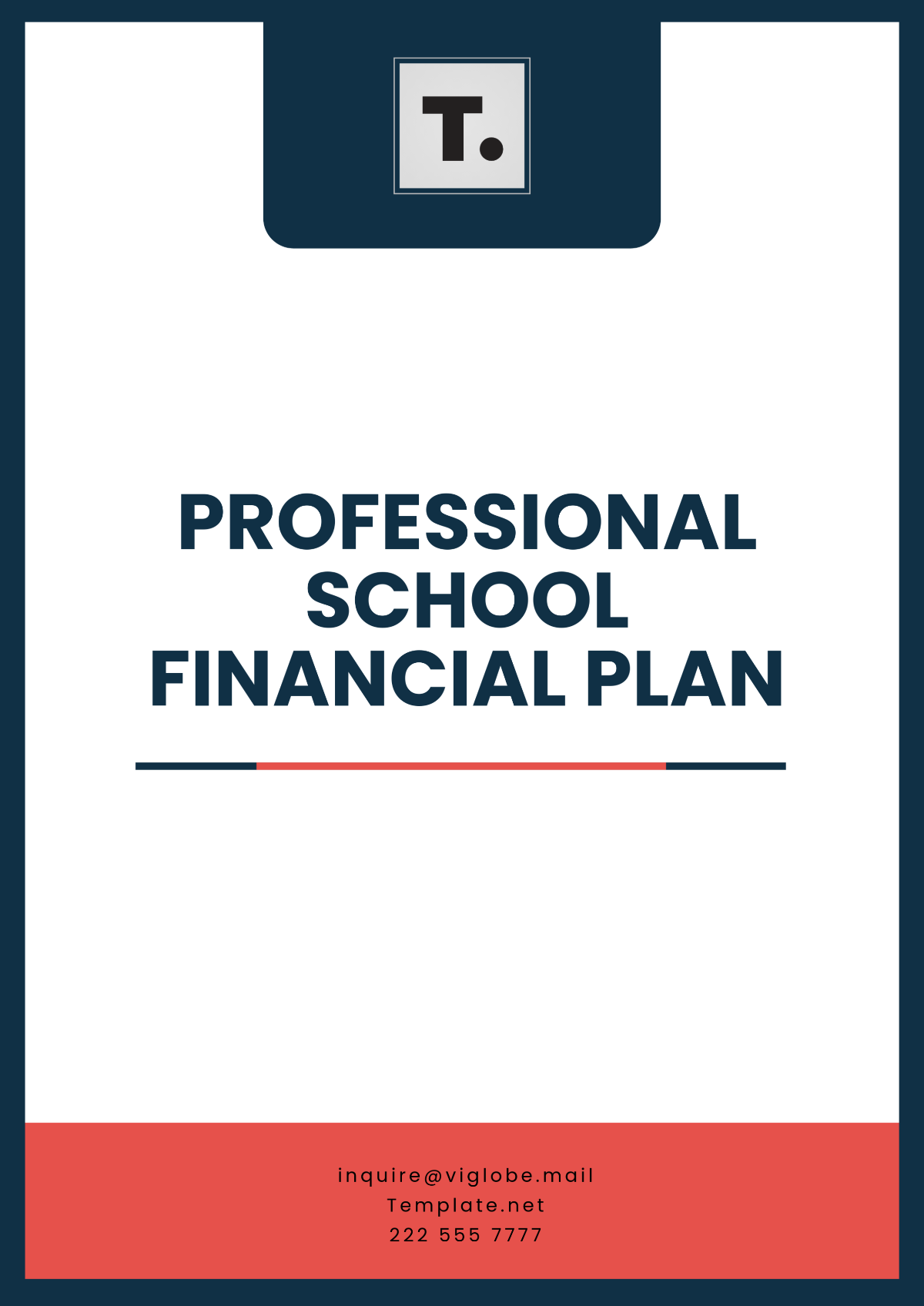
School Name: [Your Company Name]
Plan Duration: January 1, 2050 – December 31, 2050
1. Executive Summary
Mission Statement:
[Your Company Name] strives to provide a transformative educational experience that promotes intellectual growth, critical thinking, leadership, and social responsibility. We are committed to fostering a diverse and inclusive learning environment where every student is empowered to reach their full potential and contribute meaningfully to society.
Overview of the Financial Plan:
The financial plan for 2050 focuses on ensuring the long-term financial sustainability of [Your Company Name] while simultaneously investing in enhancing the educational experience. This will be achieved through diversified revenue streams, increased philanthropic support, strategic capital investments, and cost optimization. The primary areas of focus for the 2050 financial plan include:
Increasing non-tuition revenue streams (grants, donations, and auxiliary services)
Expanding the endowment for long-term academic and operational support
Investing in campus infrastructure, technology, and academic programs
Expanding financial aid offerings to ensure accessibility and affordability for all students
Key Financial Goals:
Achieve a balanced budget with a projected net surplus of $8,000,000 for 2050
Increase non-tuition revenues by 20% by expanding auxiliary services and enhancing fundraising initiatives
Grow the endowment by 10% through targeted campaigns and alumni engagement
Expand scholarships and financial aid, targeting a 15% increase in the number of students receiving financial support
Enhance academic programs and invest in infrastructure upgrades to support the long-term needs of the Academy
2. Revenue Sources
[Your Company Name] will generate revenue from several diversified sources in 2050, each contributing to the overall financial stability and growth of the institution.
Tuition Fees:
Projected revenue for the 2050 academic year is $35,000,000. Tuition fees are expected to increase by 3% to accommodate inflation and rising operational costs.
The Academy will continue to offer a range of scholarship opportunities to ensure that tuition increases do not disproportionately affect students from lower-income backgrounds.
Grants and Donations:
The Academy anticipates receiving $8,000,000 in grants from federal, state, and private sources. This includes research grants, academic program support, and infrastructure development grants.
A focused fundraising campaign will raise $5,000,000 in private donations, primarily from alumni, corporate sponsors, and foundations. The goal is to establish a sustainable source of philanthropic revenue to support both short-term academic goals and long-term capital projects.
Endowment Income:
The projected income from the endowment fund in 2050 is $7,500,000, with a targeted growth of 10%. This will be achieved through a combination of prudent investments and targeted fundraising efforts.
The endowment's investment strategy will focus on a diversified portfolio of equities, fixed income, and alternative investments, with an emphasis on responsible, sustainable investing practices.
Other Income:
Projected income from auxiliary services (including campus housing, meal plans, bookstore, and event space rentals) is expected to generate $6,000,000.
Additional revenue from summer camps, continuing education programs, and corporate training initiatives is expected to contribute $2,500,000. These programs will expand in 2050 to include new professional development certifications and international partnerships.
Total Projected Revenue for 2050: $63,000,000
3. Expenditures
The projected expenditures for 2050 reflect the Academy’s ongoing commitment to providing an excellent education, enhancing campus facilities, and ensuring long-term sustainability. Major expenditures include:
Operational Expenses:
Salaries and benefits for faculty, staff, and administration: $22,000,000. This includes salary increases to remain competitive with peer institutions and investment in faculty development programs to enhance teaching quality.
Facility maintenance, utilities, and general campus operations (electricity, water, cleaning, etc.): $2,500,000. An emphasis will be placed on energy-efficient solutions to lower costs and support the Academy’s sustainability goals.
Academic materials, library resources, and lab equipment: $3,000,000, including purchases of digital learning resources and new laboratory equipment to support cutting-edge research.
Technology infrastructure and software updates: $1,500,000, with a focus on upgrading classroom technology and ensuring the smooth integration of AI-driven learning tools into the curriculum.
Capital Expenses:
Building renovations and new construction projects: $10,000,000, including a new science and technology building, student dormitory upgrades, and expanded student recreational facilities.
Equipment purchases (e.g., smart classrooms, advanced research tools): $4,000,000, including new equipment for the research labs and classrooms.
Program and Research Development:
Support for new academic programs and research initiatives: $2,000,000. This includes funding for interdisciplinary programs, innovation labs, and faculty-led research projects.
Collaboration with external research organizations and partnerships with industry: $1,000,000 to foster innovation and ensure that our students have access to real-world research experiences.
Financial Aid:
Scholarships, grants, and student financial aid programs: $6,000,000. The goal is to increase the number of students receiving aid by 15%, ensuring that financial barriers do not prevent talented individuals from pursuing their academic goals.
Loan forgiveness programs for graduates entering public service fields: $2,000,000.
Debt Service:
Debt servicing on long-term loans for capital projects and campus improvements: $3,000,000.
Total Projected Expenditures for 2050: $55,000,000
4. Financial Strategies
Cost Control:
Initiate an energy efficiency program aimed at reducing utility costs by 10% through the installation of solar panels, LED lighting, and HVAC system upgrades.
Implement a centralized purchasing system to reduce supply chain costs by negotiating better deals with vendors.
Reduce administrative overhead by digitizing records and processes, aiming for a 5% reduction in administrative expenses.
Revenue Diversification:
Expand online learning options to cater to a broader, non-traditional student population, generating an additional $2,000,000 in revenue.
Create new corporate training and executive education programs, particularly in the fields of technology, business management, and sustainability.
Endowment Growth:
Target a 10% increase in endowment funds by engaging with major donors and alumni, and establishing a planned giving program.
Increase engagement with high-net-worth alumni and corporate partners to secure multi-year pledges and estate gifts.
Tuition Management:
Continue to balance tuition increases with scholarship opportunities to ensure that students from all backgrounds can attend without incurring excessive debt.
Establish an emergency student relief fund to support students facing financial hardships due to unforeseen circumstances.
5. Budget Projections
Year 1 (2050):
Projected Revenue: $63,000,000
Projected Expenses: $55,000,000
Net Surplus/Deficit: $8,000,000 (Surplus)
Year 2 (2050):
Projected Revenue: $65,000,000
Projected Expenses: $57,500,000
Net Surplus/Deficit: $7,500,000 (Surplus)
Year 3 (2050):
Projected Revenue: $67,000,000
Projected Expenses: $60,000,000
Net Surplus/Deficit: $7,000,000 (Surplus)
6. Cash Flow Forecast
January to March 2050:
Revenue from tuition fees: $15,000,000
Expenses for staff payroll and facility maintenance: $7,500,000
Net Cash Flow: $7,500,000 surplus
April to June 2050:
Revenue from auxiliary services: $3,000,000
Expenses for academic programs and supplies: $2,500,000
Net Cash Flow: $500,000 surplus
July to September 2050:
Revenue from summer programs and conferences: $4,000,000
Expenses for facility upgrades and debt servicing: $5,000,000
Net Cash Flow: $1,000,000 deficit
October to December 2050:
Donations and year-end contributions: $8,000,000
Expenses for financial aid and year-end bonuses: $6,000,000
Net Cash Flow: $2,000,000 surplus
7. Risk Management
Risk Analysis:
Economic Downturn: Economic slowdowns could reduce donations and potentially affect student enrollment. The Academy will mitigate this risk through revenue stream diversification and a robust reserve fund.
Rising Costs: Increasing operational costs, particularly for utilities and staff salaries, could outpace revenue growth. The Academy will address this through cost control measures and regular financial reviews.
Technological Disruption: Rapid technological changes could necessitate large investments in educational tools. The Academy will remain proactive in its adoption of new technologies and continuously evaluate ROI for tech investments.
Mitigation Strategies:
Create an emergency fund covering 6 months of expenses.
Diversify revenue sources to reduce dependency on tuition.
Regular engagement with donors to secure multi-year commitments.
8. Conclusion
The 2050 financial plan for [Your Company Name] is designed to ensure long-term stability while expanding our educational offerings and enhancing student experiences. By focusing on strategic investments, financial aid expansion, and revenue diversification, we aim to continue providing exceptional educational opportunities for students from all walks of life. We are confident that the Academy will remain a leading institution in the years to come.
- 100% Customizable, free editor
- Access 1 Million+ Templates, photo’s & graphics
- Download or share as a template
- Click and replace photos, graphics, text, backgrounds
- Resize, crop, AI write & more
- Access advanced editor
Secure your school’s future with Template.net’s Professional School Financial Plan Template. Customizable and editable, it simplifies financial forecasting and budgeting. Editable in our AI Editor Tool, this template is ideal for planning revenue streams and expenses. Download now for a professional financial strategy.
You may also like
- Finance Plan
- Construction Plan
- Sales Plan
- Development Plan
- Career Plan
- Budget Plan
- HR Plan
- Education Plan
- Transition Plan
- Work Plan
- Training Plan
- Communication Plan
- Operation Plan
- Health And Safety Plan
- Strategy Plan
- Professional Development Plan
- Advertising Plan
- Risk Management Plan
- Restaurant Plan
- School Plan
- Nursing Home Patient Care Plan
- Nursing Care Plan
- Plan Event
- Startup Plan
- Social Media Plan
- Staffing Plan
- Annual Plan
- Content Plan
- Payment Plan
- Implementation Plan
- Hotel Plan
- Workout Plan
- Accounting Plan
- Campaign Plan
- Essay Plan
- 30 60 90 Day Plan
- Research Plan
- Recruitment Plan
- 90 Day Plan
- Quarterly Plan
- Emergency Plan
- 5 Year Plan
- Gym Plan
- Personal Plan
- IT and Software Plan
- Treatment Plan
- Real Estate Plan
- Law Firm Plan
- Healthcare Plan
- Improvement Plan
- Media Plan
- 5 Year Business Plan
- Learning Plan
- Marketing Campaign Plan
- Travel Agency Plan
- Cleaning Services Plan
- Interior Design Plan
- Performance Plan
- PR Plan
- Birth Plan
- Life Plan
- SEO Plan
- Disaster Recovery Plan
- Continuity Plan
- Launch Plan
- Legal Plan
- Behavior Plan
- Performance Improvement Plan
- Salon Plan
- Security Plan
- Security Management Plan
- Employee Development Plan
- Quality Plan
- Service Improvement Plan
- Growth Plan
- Incident Response Plan
- Basketball Plan
- Emergency Action Plan
- Product Launch Plan
- Spa Plan
- Employee Training Plan
- Data Analysis Plan
- Employee Action Plan
- Territory Plan
- Audit Plan
- Classroom Plan
- Activity Plan
- Parenting Plan
- Care Plan
- Project Execution Plan
- Exercise Plan
- Internship Plan
- Software Development Plan
- Continuous Improvement Plan
- Leave Plan
- 90 Day Sales Plan
- Advertising Agency Plan
- Employee Transition Plan
- Smart Action Plan
- Workplace Safety Plan
- Behavior Change Plan
- Contingency Plan
- Continuity of Operations Plan
- Health Plan
- Quality Control Plan
- Self Plan
- Sports Development Plan
- Change Management Plan
- Ecommerce Plan
- Personal Financial Plan
- Process Improvement Plan
- 30-60-90 Day Sales Plan
- Crisis Management Plan
- Engagement Plan
- Execution Plan
- Pandemic Plan
- Quality Assurance Plan
- Service Continuity Plan
- Agile Project Plan
- Fundraising Plan
- Job Transition Plan
- Asset Maintenance Plan
- Maintenance Plan
- Software Test Plan
- Staff Training and Development Plan
- 3 Year Plan
- Brand Activation Plan
- Release Plan
- Resource Plan
- Risk Mitigation Plan
- Teacher Plan
- 30 60 90 Day Plan for New Manager
- Food Safety Plan
- Food Truck Plan
- Hiring Plan
- Quality Management Plan
- Wellness Plan
- Behavior Intervention Plan
- Bonus Plan
- Investment Plan
- Maternity Leave Plan
- Pandemic Response Plan
- Succession Planning
- Coaching Plan
- Configuration Management Plan
- Remote Work Plan
- Self Care Plan
- Teaching Plan
- 100-Day Plan
- HACCP Plan
- Student Plan
- Sustainability Plan
- 30 60 90 Day Plan for Interview
- Access Plan
- Site Specific Safety Plan

